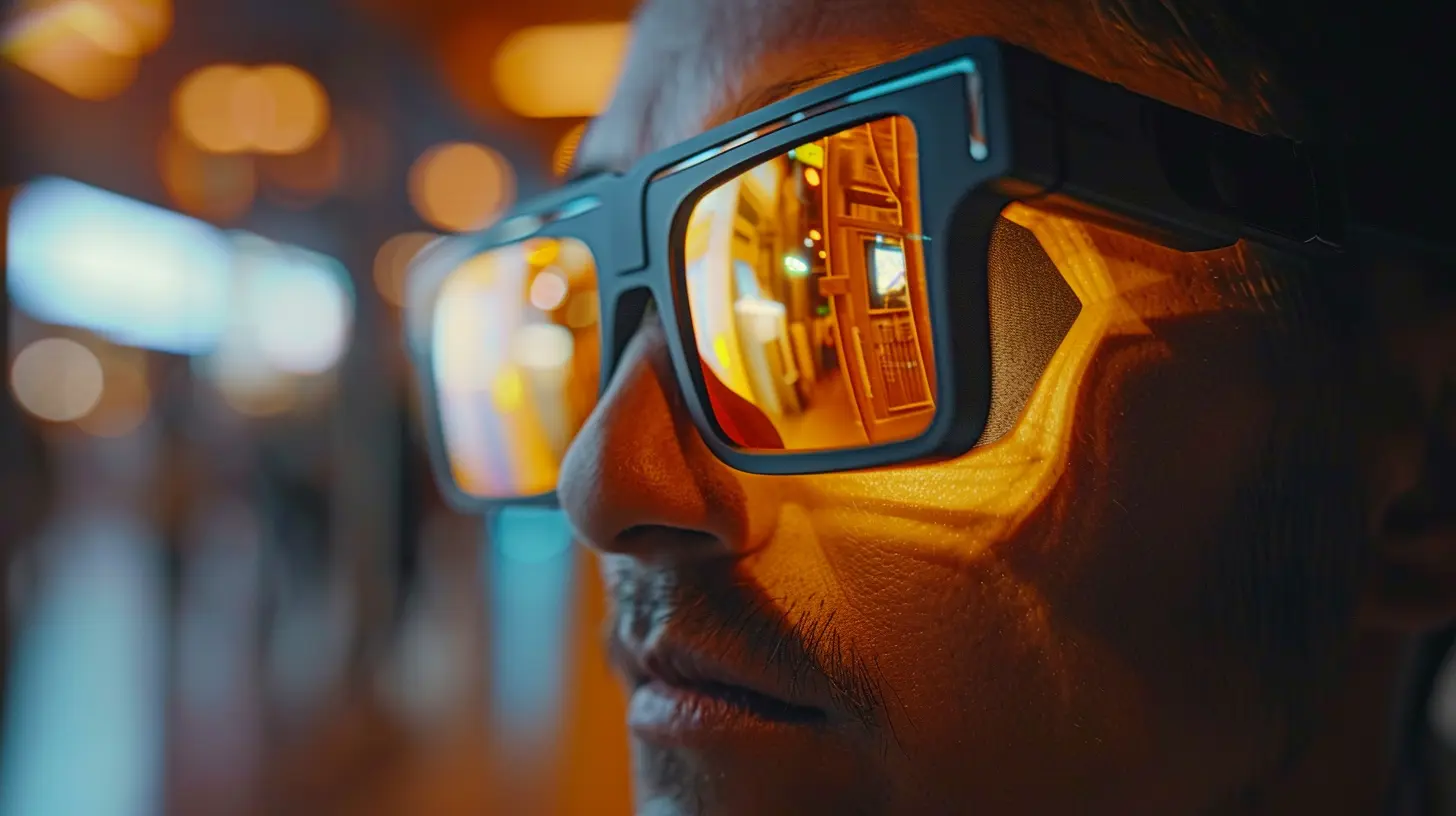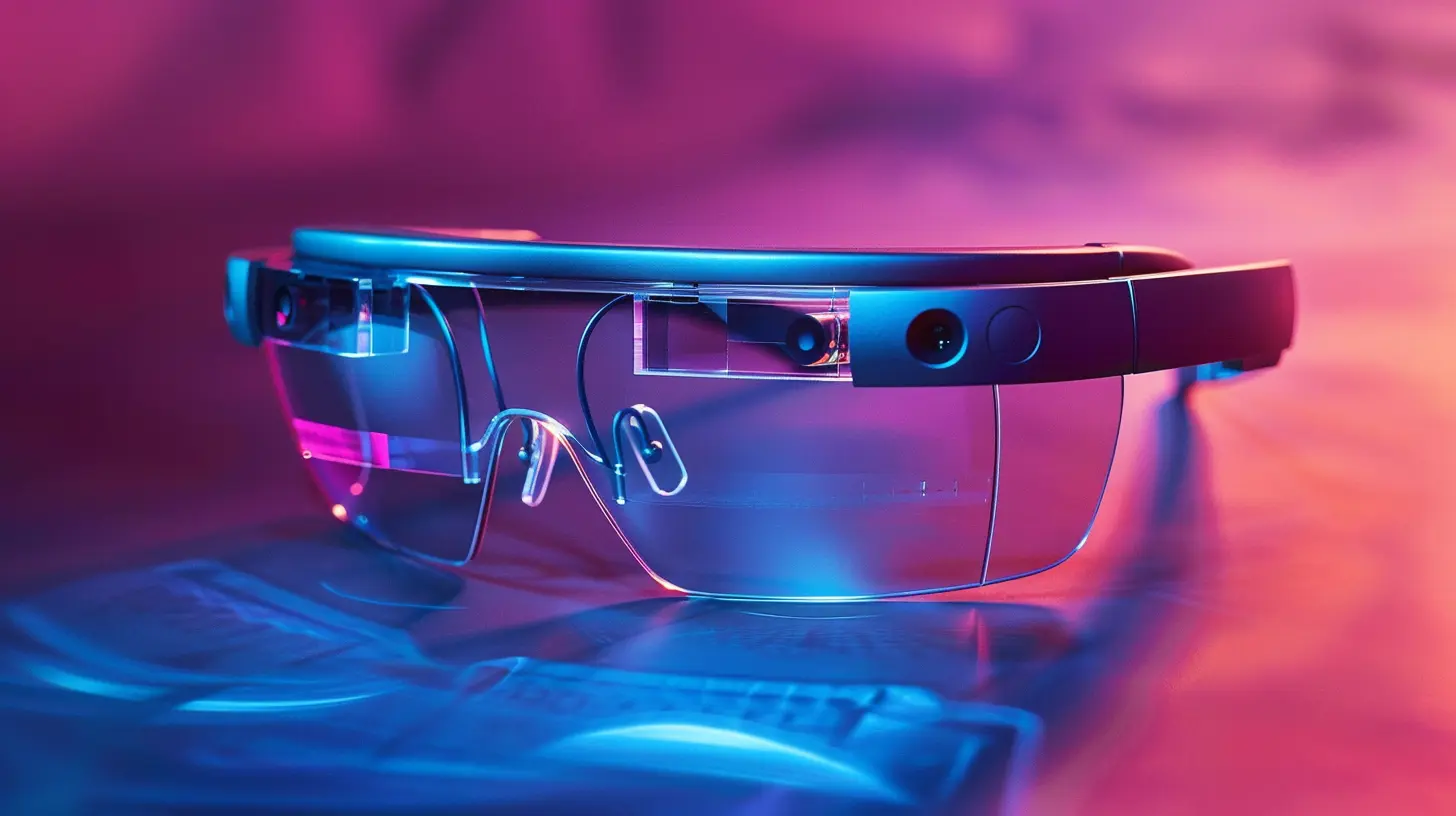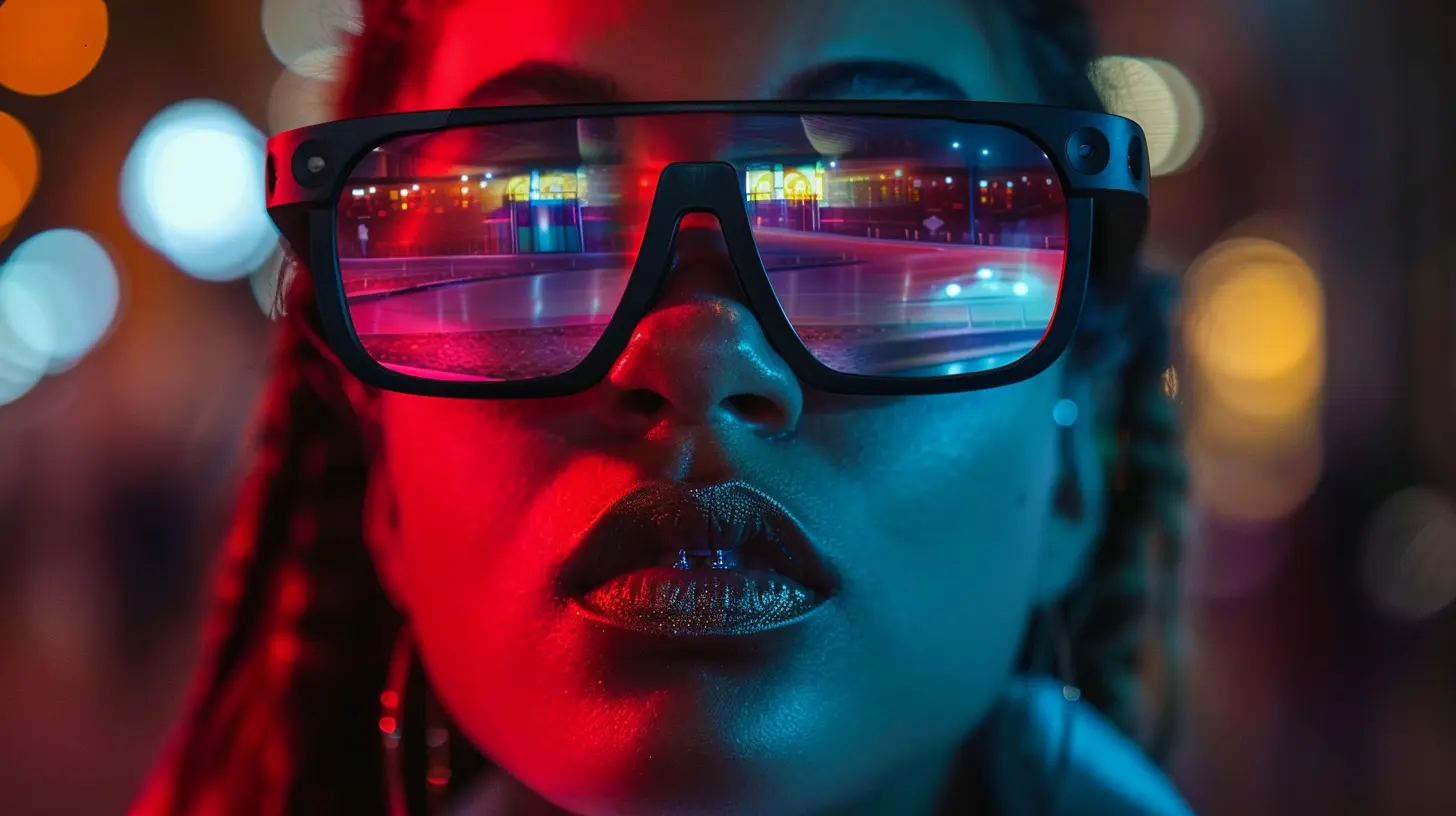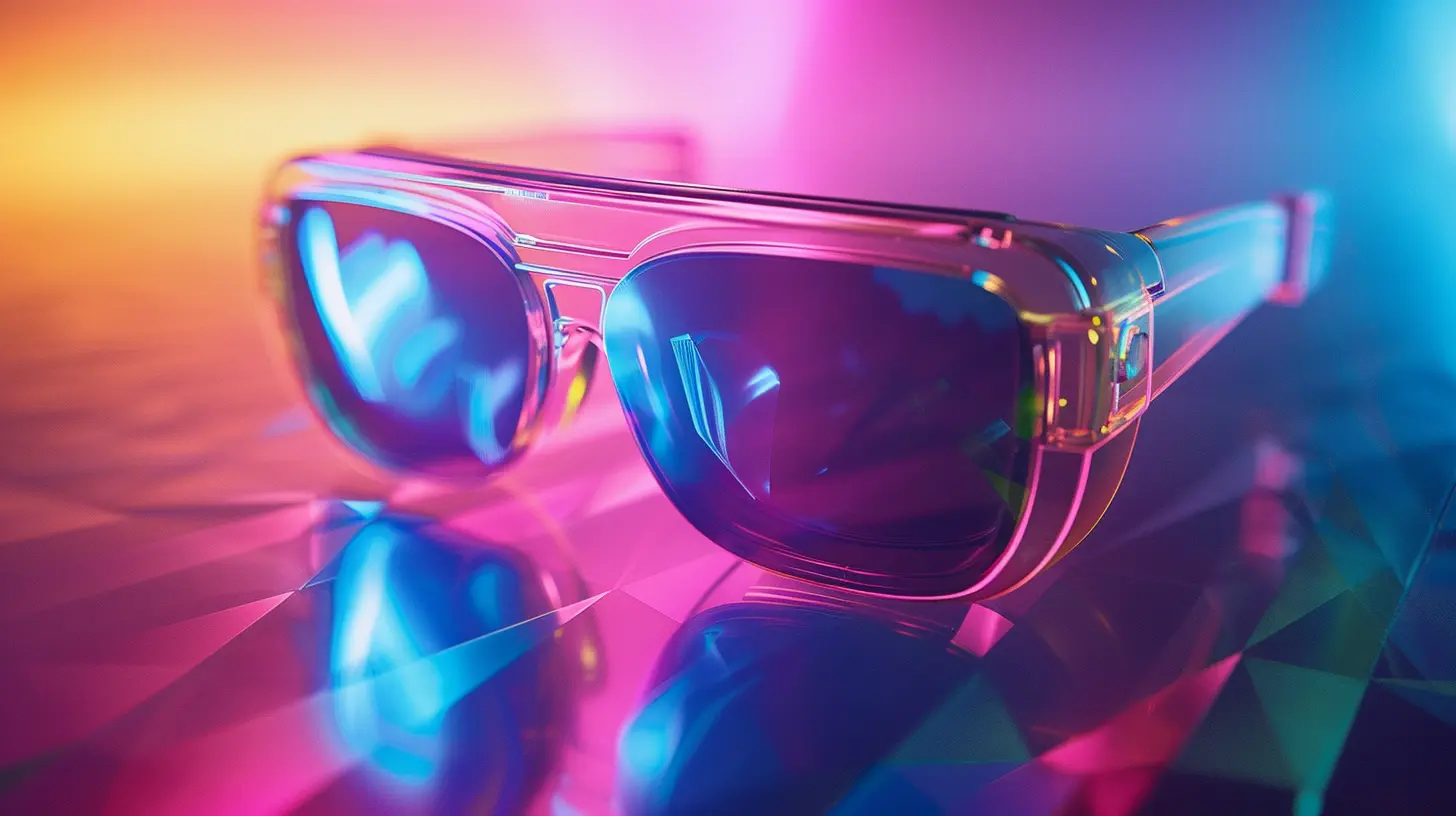How AR Glasses Are Changing the Advertising Landscape
16 May 2025
Augmented Reality (AR) glasses are no longer just a cool piece of tech you see in sci-fi movies. They're here, and they're already transforming various industries, including advertising. Yep, you heard that right! AR glasses, which superimpose digital elements onto the real world, are shaking up how brands reach and engage with consumers. If you've ever wondered how, you’re in the right place.
Imagine walking down the street, glancing at a billboard, and having it instantly come to life in front of your eyes. No need to pull out your phone or scan a QR code. Just a pair of sleek AR glasses can turn a static ad into an interactive masterpiece. Sounds like the future? Well, it's happening now. In this article, we’ll dive deep into how AR glasses are changing the advertising game, and why marketers are excited about it.

The Evolution of Advertising: From Print to AR
Advertising has always been about grabbing attention. Whether it was through colorful billboards, engaging TV commercials, or catchy online ads, the goal has always been the same: get noticed. But here's the thing — today's consumers are more distracted than ever. With the constant barrage of content on smartphones, social media, and streaming platforms, traditional ads can sometimes feel like background noise.Enter AR glasses. These futuristic devices are taking advertising to a whole new level. Instead of pushing ads through traditional mediums, AR glasses allow brands to place ads directly into your real-world experience. Think of it as the next evolution in advertising, much like how we went from print ads to digital ads.
Why AR Glasses Are a Game-Changer for Advertisers
So, what’s the big deal about AR glasses? Let me break it down for you.1. Immersive Experiences: AR glasses offer immersive, interactive experiences that are hard to ignore. Unlike a regular ad you might scroll past on your phone, AR ads blend seamlessly into your environment. Imagine looking at a product in a store and instantly seeing reviews or a virtual demo pop up next to it — all through your AR glasses. It’s like magic!
2. Personalization: One of the biggest strengths of AR glasses is their ability to deliver personalized content. These glasses can track your location, analyze your surroundings, and even learn your preferences over time. This means advertisers can tailor their messages specifically to you. For example, if you're walking past a coffee shop, your AR glasses could show you a special deal for your favorite drink. Personalized ads? Yes, please!
3. Engagement on Steroids: Traditional ads are often passive. You sit, you watch, and maybe you click. But AR glasses? They make the whole experience interactive. You can engage with the ad in real-time, explore products in 3D, or even play games — all while wearing your glasses. This level of interaction leads to higher engagement rates, which is a win-win for both consumers and advertisers.
4. Less Intrusive, More Fun: Let’s be honest — most of us find ads annoying. But AR ads have the potential to feel less like interruptions and more like enhancements to your environment. Instead of blasting an ad at you, AR glasses can subtly integrate branded content into your surroundings, making the experience more enjoyable and less intrusive.

Real-World Applications of AR Glasses in Advertising
Alright, now that we’ve covered why AR glasses are such a big deal, let’s talk about how they’re actually being used in the real world. Spoiler alert: The possibilities are endless.1. Retail and E-Commerce
Imagine shopping for clothes online and not having to guess whether that jacket will look good on you. With AR glasses, you can ‘try on’ virtual outfits without ever stepping into a store. Retailers are already using AR technology to allow customers to visualize products in their own space. Fancy a new sofa? With AR glasses, you could see exactly how it would look in your living room before clicking ‘buy.’This doesn’t just apply to e-commerce. Physical stores can leverage AR glasses too. Picture this: You walk into a store, and as you browse, your AR glasses offer suggestions based on your preferences, show you product reviews, or highlight special discounts. This creates a seamless blend of online and offline shopping, making the experience more engaging and personalized.
2. Outdoor Advertising (Billboards, Posters, and Public Spaces)
Billboards might be old-school, but AR glasses are giving them a modern twist. Picture a standard billboard for a car brand. With AR glasses, that image can morph into an animated 3D model of the car driving down the street, allowing you to explore its features in real-time. It's like having a virtual car showroom right in front of you!And it’s not just billboards. Posters, bus stops, and even building walls can become interactive ad spaces when viewed through AR glasses. Advertisers can deliver dynamic content that evolves based on the viewer's location, preferences, or even the time of day.
3. Entertainment and Events
AR glasses are already making waves in the entertainment industry, particularly in live events and concerts. Brands can use AR to enhance the audience’s experience by layering digital content over the real-world performance. Imagine attending a concert where your AR glasses display exclusive backstage footage, artist interviews, or even interactive games during the intermission. Advertisers can sponsor this content, turning ads into a part of the entertainment experience itself.Sporting events are another goldmine for AR advertising. Brands can offer real-time stats, virtual replays, or even branded mini-games that viewers can play while watching the game, without ever looking away from the action.
4. Experiential Marketing
Experiential marketing is all about creating memorable brand experiences, and AR glasses take this to the next level. Brands can create virtual pop-up stores, interactive art installations, or immersive brand experiences that consumers can explore through their AR glasses. It’s like stepping into a new world, but instead of using VR headsets, you’re simply wearing a pair of glasses.For example, a cosmetics brand could create a virtual makeup tutorial where users can apply different products to their own face in real-time. Or, a travel company could offer virtual tours of exotic destinations, allowing you to ‘experience’ a location before booking a trip. The possibilities are only limited by imagination.

The Challenges of AR Advertising
Of course, as with any new technology, AR glasses come with their own set of challenges that advertisers need to consider.1. Cost and Accessibility
Right now, AR glasses are still relatively expensive and not widely adopted. While big brands with deep pockets can afford to invest in AR advertising, smaller businesses might find the costs prohibitive. However, as the technology matures and becomes more affordable, we can expect to see broader adoption.2. User Privacy Concerns
AR glasses often rely on collecting data about the user’s surroundings and behavior to deliver personalized experiences. This raises concerns about privacy. How much data are users willing to share? And how can advertisers ensure they’re using this data responsibly? Brands will need to navigate these concerns carefully to avoid backlash.3. Content Overload
One potential downside of AR advertising is the risk of content overload. If every surface around us becomes a potential ad space, will it become too much? Advertisers will need to strike a balance between offering useful, engaging content and overwhelming users with too many ads.
The Future of AR Glasses in Advertising
Despite these challenges, the future of AR glasses in advertising looks incredibly promising. As the technology improves and becomes more accessible, we’ll likely see AR glasses becoming a staple in the advertising world. Imagine a future where every brand interaction is personalized, engaging, and seamlessly integrated into your environment. That's the potential AR glasses hold.The key for advertisers will be to use AR glasses in ways that enhance the user experience rather than detract from it. The most successful AR ads will be those that feel natural, useful, and fun — not intrusive or overwhelming.
As we move forward, AR glasses could even replace smartphones as our primary way of interacting with digital content. And when that happens, the advertising landscape will change forever. So, if you're a marketer, now might be a good time to start thinking about how your brand can leverage AR glasses to stay ahead of the curve.
Conclusion
AR glasses are revolutionizing the advertising landscape by offering immersive, personalized, and interactive experiences. From retail to outdoor ads, entertainment to experiential marketing, AR glasses open up a world of possibilities for brands to connect with consumers in fresh and exciting ways. While challenges like cost and privacy concerns exist, the potential for AR advertising is huge.The future of advertising is here, and it's wearing glasses. The question is, are you ready for it?
all images in this post were generated using AI tools
Category:
Ar GlassesAuthor:

Gabriel Sullivan
Discussion
rate this article
3 comments
Vesperos Torres
AR glasses are flipping the advertising playbook—imagine brands seamlessly blending into our reality. It’s not just advertising; it’s immersive storytelling that transforms consumers into active participants.
June 11, 2025 at 3:05 AM

Gabriel Sullivan
Absolutely! AR glasses are redefining advertising by creating immersive experiences that engage consumers in a narrative-driven way, turning passive viewers into active participants.
Viviana Elliott
AR glasses are revolutionizing advertising by creating immersive experiences that engage consumers like never before. Brands now have the unique opportunity to deliver targeted content in real-time, transforming passive viewing into interactive engagement. This technology will redefine consumer-brand relationships and elevate marketing strategies to new heights.
May 30, 2025 at 12:57 PM

Gabriel Sullivan
Absolutely! AR glasses are indeed transforming advertising by fostering interactive and immersive experiences, allowing brands to connect with consumers in innovative ways. This technology is set to reshape the future of marketing.
Harmony Meyers
AR glasses are redefining advertising by creating immersive experiences, enhancing consumer engagement, and personalizing brand interactions effectively.
May 16, 2025 at 12:42 PM

Gabriel Sullivan
Thank you! AR glasses truly are revolutionizing advertising by enabling brands to offer immersive, engaging, and personalized experiences that resonate with consumers.


